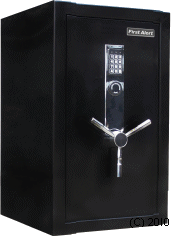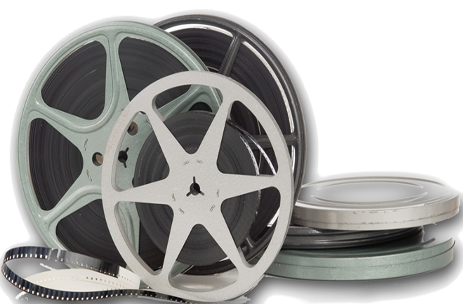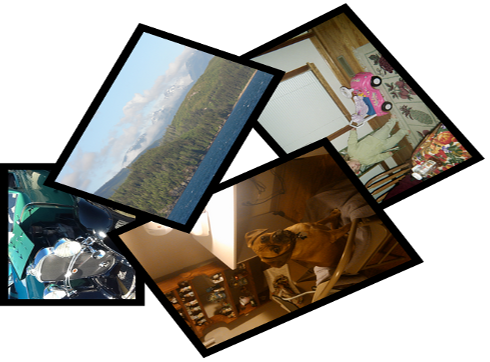Disaster Retention of all your Media is important to ensure you retain them for the future and your family's future.
Natural Disasters Tornado's , Flooding, Storms, Hurricanes and more if your media is left as is and not backed up and retained you stand the chance as others have to loose valuable memories. Digitizing your media is only one safe guard. Next you need to ensure all your data it is on an "external drive" , besides on your computer, or a server to ensure recovery encase of loss. Lastly that external drive Must now be safeguarded in a fire / water proof safe.
There are some options for storage that will ensure you can restore after loss:
- A cloud service provider is one option, they are providing you this service for a monthly or annual fee, it is a managed service from your computer normally.

- A personal off site, not were you have your media, cloud server. This can be at your cost and you maintain it, if you have a off site location option.

- A External Hard Drive and fire and water proof safe to store it in. This offers you a secure way to backup all your data as you need to say monthly, and then lock it in the safe in your house. These safes are very heavy and some can be secured to a concrete floor or wall. This would be optimum storage at a reduced cost, but you have to maintain as long as you are comfortable weekly / monthly or quarterly pulling out the external drive and backing up new / updated items then you control your future. This can be done by utilization of backup software that will keep track and scan your computer , comparing it to the external drive contents and letting you know the changes, then you update and pack the external drive back up in the safe.



As you will see below how long life expectancy is for your media types if left as is, and you can image how long they will last in a natural disaster.
Converting your older media to digital and ensuring retention is very important, unless you don't consider the video and audio (purchased pror) to be of value to your self or family than I would stop reading at this point.
Else, review the life expectancy not only of the media, but the players as well replacing them. Then consider taking the necessary steps on your own to perserve them for time. It can be a little costly up front to have it done, but you have piece of mind based on your memories and investments based on audio vinyl / cassettes as well as VHS videos.
Some of the converting you can even research and perform on your own if you have the time and are willing to up front the expense for equipment to perform that may not be used again.
Else contact us and let us help you perform that function.
VHS, HI8, VHS-C, slide show your (Photos, Negatives, Slides, Albums, Negatives, Slides, Albums), 8 mm reel tapes tapes to DVD:
What is the life expectancy of my video tape? 
Although there have been numerous studies about tape longevity and stability that have produced valuable information, such as the work conducted by the National Media Lab in the mid-1990s, there is no accurate way of estimating the life expectancy of a video tape. As you might expect, it varies greatly depending on the brand, the way the tape is handled and stored.
Most video experts agree though the life span is between 8 to 12 years and they recommend transferring them into digital media within the first 5 years. Because we are busy, time-pressed folks trying to balance living in the moment and capturing the moment, we often let our video tapes gather and collect dust.
Audio cassettes tape have the same issues as stated with video tapes.
How do I know my old 8mm film is still good? 
8mm and Super8 movie film, unless stored in very hot or moist conditions or in tightly sealed cans, is nearly always in good enough shape to do a transfer. Although the plastic leader sometimes becomes brittle over time, in most cases the filmstock itself remains in good shape.
There are a few things to look for if you have doubts. First, smell your film. If it has a very strong chemical odor, chances are it has damage of some sort. Check to see if the layers are stuck together. If not, check to see if the film has started to curl if you look at it edge-on. Finally bend the film and see if it is brittle. If your film is stuck together, badly curled or very brittle, we may not be able to transfer it. For film that is slightly curled or damaged which we may be able to transfer, you will probably see defects in the transfer including edges that are out of focus, skips and pauses in the film, framing issues, etc.
Slides and Negatives, "film", have the same issues as stated above.
Longevity of CD/DVD Media 
The longevity or shelf life of optical media refers to the time frame in which disc data can still be accessed without encountering loss or damage. Concrete lifespan numbers for discs are difficult to establish due to fluctuating environmental and physical factors that are open to individual interpretation.
In real-world applications, the elements that affect a disc's shelf life include: the manufacturer's materials and quality of assembly, user handling and storage, compatible hardware and other disc equipment as well as exposure to excess heat, light or humidity.
Discs with gold layers have outperformed standard discs in numerous scientific tests.
Phase-changing technology for formats like CD-RW, DVD-RW and BD-RE will have a limited shelf life in the number of transitions it can endure between crystalline and amorphous (reading, writing, re-writing) states. The quality of dye employed in the recording layers of the R format impacts the disc's lifespan and depending on external variables, will break down at unique rates.
For a competitive market edge, some optical media manufacturers will use Accelerated Life Testing (ALTs) to demonstrate the durability of their product. ALTs can estimate a disc's lifespan through a series of stress tests that can rapidly age the media and then calculate a real-time shelf life quotient. Stresses for this test include humidity, temperature and UV rays.
The discrepancies in these tests lie in the fact that not every stress factor is utilized and what is deemed the end of life indicator can be subjective. Some Accelerated Life Tests determine these indicators to be a particular measurement of jitters while others weigh the Parity Inner Errors or the Block Error Rates. These error rates convey the number of errors requiring correction when reading or writing a disc.
Consequently, the lifespan of CDs, DVDs and Blu-rays contain a range of testing measurements and can be conservatively estimated, with some compact discs tending to outlast DVD formats:
- Unrecorded CD-R and CD-RW: 5-10 years
- Recorded CD-R: 50-200 years
- Recorded CD-RW: 20-100 years
- Recorded DVD-R: 30-100 years
- Recorded DVD-RW: up to 30 years
- Recorded BD-R and BD-RE: 30-200 years
What can be done to stop photo fading: 
Yes, color photographs do fade. Unfortunately, the color dyes used in the image irreversibly decay with time. Light increases fading. Fading increases with the brightness of the light and the length of time in the light. When displayed, photos should be kept away from direct sunlight or bright lamps that are left on constantly.
Heat also increases fading, even at moderate temperatures, such as 70-75F, found in homes. At these temperatures, fading always occurs, even in the dark! Color photos will last longer if stored in the dark, in a cool dry location. However, only storage at cold temperatures can slow this irreversible decay process to a near stop. Cold storage is not practical for most people and can even cause more immediate damage if used improperly.
In recent years, since the mid-1980s and especially since 1990, the major photographic manufacturers have developed more stable dyes for color photographs, including the type of photographic paper used for snapshots. The good news is that these modern photographic prints will only fade a little over a lifetime, or even in 100 years, if kept in average home conditions. When displayed in moderate light conditions, slight fading might occur in 25 to 50 years. Remember that moderate light conditions do not include direct sunlight or bright spotlights! Previous to the mid-1980s, color photos faded dramatically in a few years when displayed even in moderate light, or even after 10 to 20 years when stored in boxes and albums. The other good news is that Kodachrome slides and transparencies always had stable dyes and will last decades with very little fading if they are not left in a projector for long periods. Even 60 year old Kodachrome slides look nearly unfaded. Cibachrome (now called Ilfochrome) photos always had good color dye stability, too. The bad news is that your older family photos and favorite portraits, Ektachrome slides, and other important color photos, are probably already faded. If you have selected the most important family photographs, those you hope to have for your lifetime or future generations, they should be copied now and printed onto the more stable color photograph papers. Faded color photographs also can now be scanned into a computer and digitally enhanced to restore the faded dyes to near original appearance, then printed onto the more stable photographic papers. Avoid copy prints made on computer printer paper, as these fade even faster than old color photos and are unusually sensitive to water!
